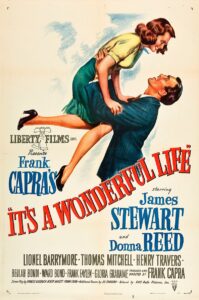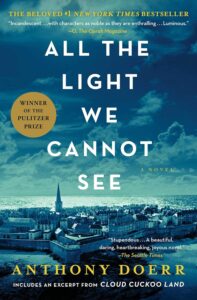A Tribute to Hanna Bratman
December 2, 2023 • 11 Comments • Posted in blindness, careers/jobs for people who are blind, guest blog, memoir writing, politics, teaching memoirEarlier this week I got word that Hannelore (Hanna) Bratman, a writer in the memoir-writing class I used to lead at the Chicago Cultural Center, had died Monday, just short of her 104th birthday.
Hannelore had age-related macular degeneration and found out about my “Me, Myself and I” writing class decades ago from volunteers who read mail out loud to her every week at Blind Service Association (now referred to as Blind Service Chicago).
“They are the ones who told me about this blind lady who teaches a writing class,” Hanna told me years later. “I just had to come and find out how she does it.”
We were so fortunate to have Hannelore in that class –her essays taught us so much. She had grown up in a German industrial city called Mannheim, her family was Jewish and owned a substantial home and butcher shop there, her father died when she was a child, and her mother went on to single-handedly raise her daughter Hannelore and run the family butcher shop. To give you an example of the sorts of things we learned from Hanna’s stories, I’m sharing an essay she wrote about what life was like for a young Jewish student in 1933 Nazi Germany
What’s In My Head
by Hanna Bratman
I told my mother the trouble I had with my algebra teacher, the one who started each class with a loud Hitler salute. He raises his arm and shouts in a loud voice, HEIL HITLER as he walks in the room.
“Heil Hitler,” he shouts, and everybody in the class stands up, raises their arm, and shouts Heil Hitler back. If it is not loud enough, we all repeat the routine.
Then there are some comments about how the Jews are destroying Germany, that Jews should be banned, and sometimes he also mentions the Gypsies.
Now I am telling her about the problem I had just yesterday with Herr Professor Buhl. I had not told my mother that I had gotten a “B” on that important test, and now I had to confess: On that last test that he gave us, after his Heil Hitler, he handed out the papers, and I had a B instead of an A. All of my answers were correct. I raised my hand and got up, shouted Heil Hitler, and asked him why I had a B instead of an A. His reply: “I gave you a B because you did not follow the formula I taught. You followed a formula I had not taught as yet. Besides, you are a nervy Jew to challenge me. I will downgrade all of your papers.”
I said to my mother, “I didn’t tell you about it, but I will never go back to that school. They don’t want me there.” I started crying again.
My mother said, “If you really don’t want to go back, I won’t make you. You know, Hitler will not last much longer. There will be a change in government, and Hitler will not last. In the meantime, even if you don’t go to school, you will have to keep up with all your schoolwork and study French and English. I will arrange to get the assignments, and when Hitler is gone, you can go back” I never did go back, but my mother left me with these words that have guided me through the rest of my life: “You know, they can take everything away from you, except what’s in your head.”
Hannelore was only 19 when she escaped Germany on her own — other family members didn’t make it out in time. She met her future husband, Eugene Bratman, on the MS Saturnia on their way to America. When they arrived here, no one could pronounce her name, so she changed it to Hanna. She will be missed, but fortunately for us, she lives on through these stories she wrote.




